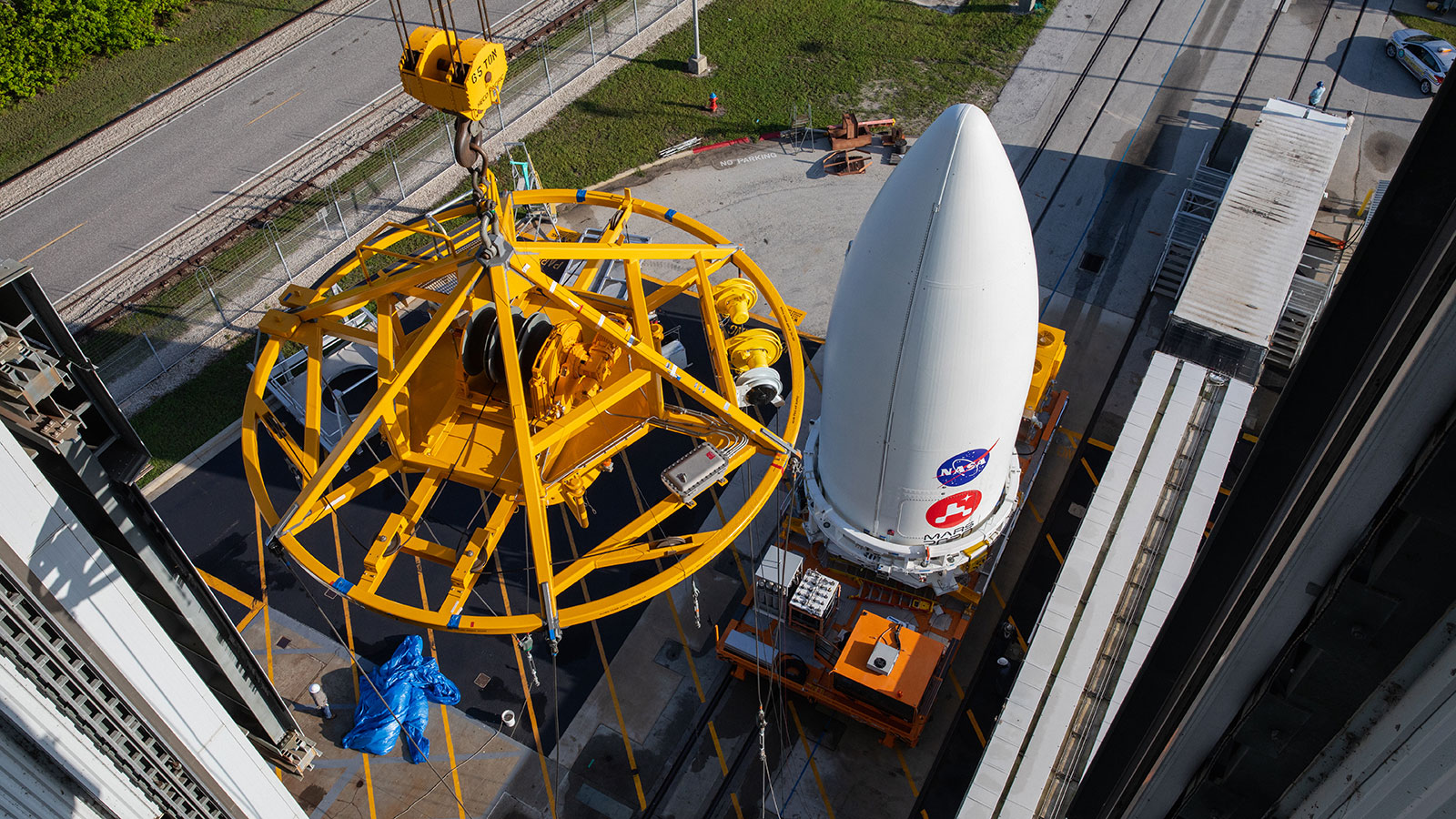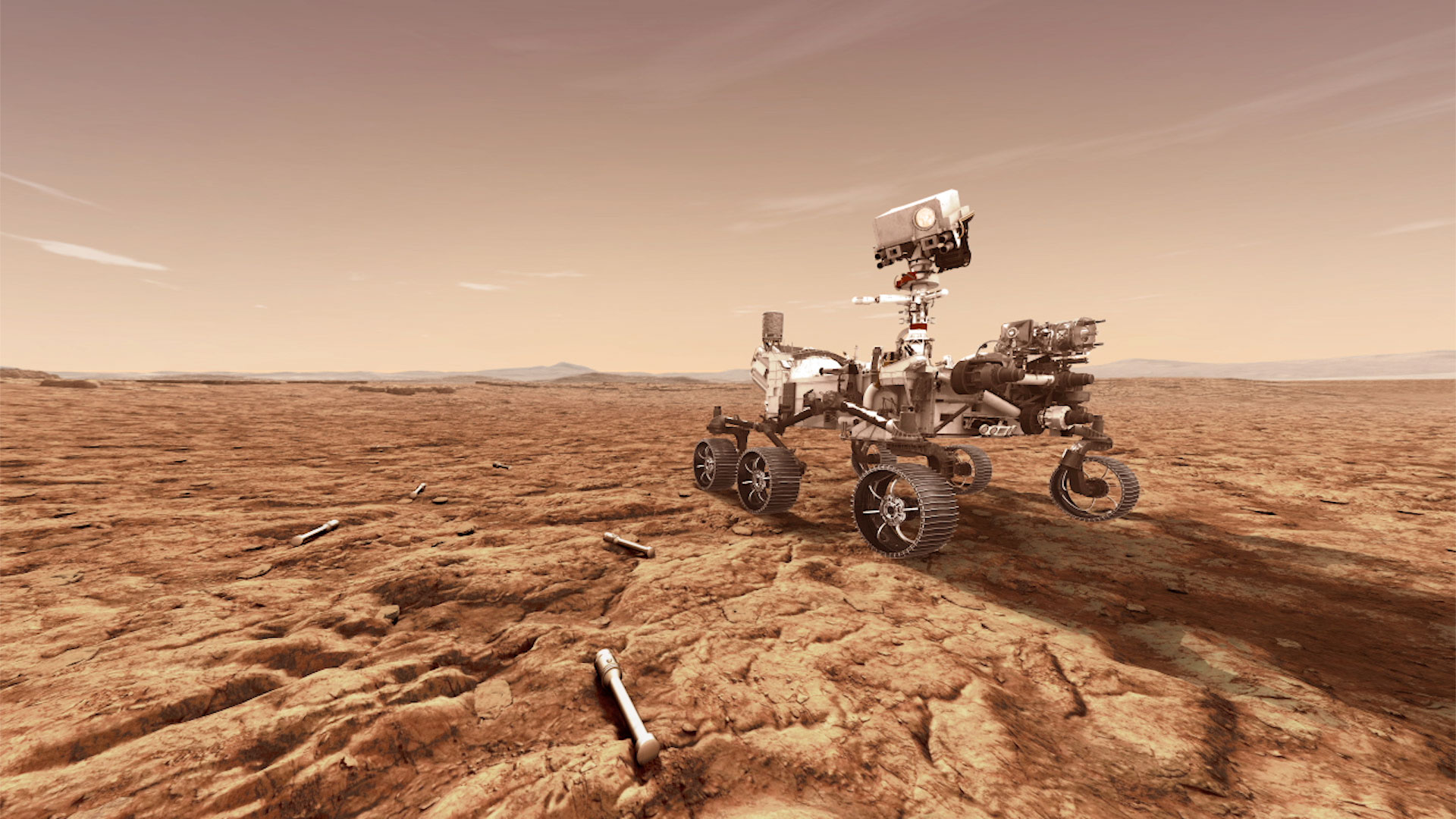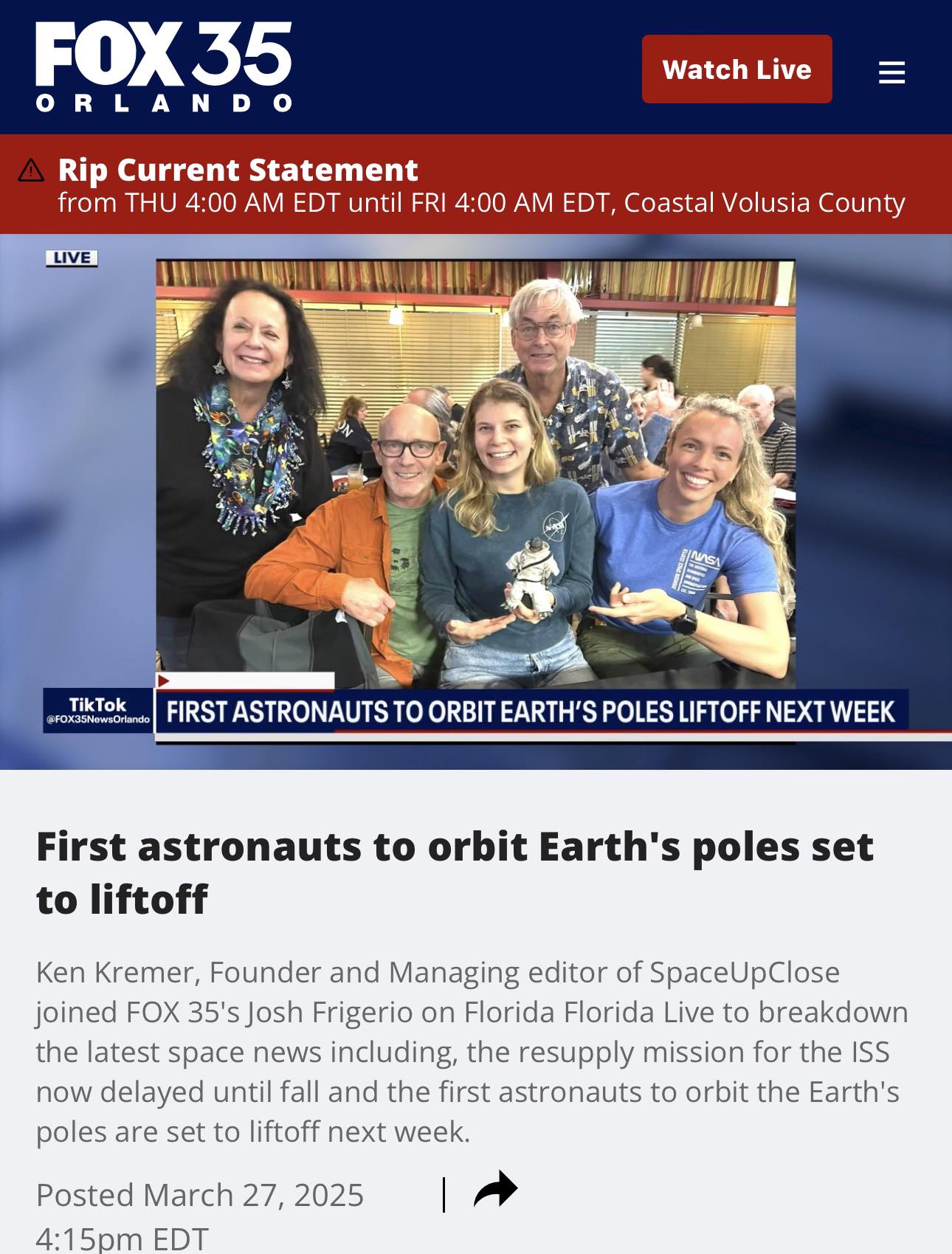
For SpaceUpClose.com & RocketSTEM
CAPE CANAVERAL, FL – Making significant progress after multiple delays NASA’s $2.7 Billion Perseverance Mars rover has at last been joined to the top of the mighty United Launch Alliance (ULA) Atlas V rocket that will hurl it from our Home Planet to the Red Planet as soon as the end of this month – on a breathtaking mission dedicated to the search for signs of life beyond Earth.
The NASA/ULA team mated the nose cone encasing the Mars 2020 spacecraft – comprising the rover, aeroshell, cruise stage, and descent stage – atop the ULA Atlas V rocket on Tuesday, July 7, awaiting it inside the Vertical Integration Facility (VIF) at Space Launch Complex 41 on Cape Canaveral Air Force Station in Florida.
Technicians used a 60-ton hoist crane on the roof of the VIF to lift the nose cone encapsulating the rover and spacecraft components 129 feet (39 meters) to the top of the Atlas V which was already assembled several weeks ago starting on May 28 with first stage lifting onto the mobile launch platform.
“There, engineers made the physical and electrical connections that will remain between booster and spacecraft until about 50 to 60 minutes after launch, when the two are pyrotechnically separated and Perseverance is on its way,” said NASA.
I’m now 129 feet (39 meters) closer to Mars, encased on top of the rocket that’s going to send me there. This is a huge step for me and my team. We got here together, and we’ll make it to Mars the same way. https://t.co/5Hwya0pfkA #CountdownToMars pic.twitter.com/qZ6gwk8wNo
— NASA's Perseverance Mars Rover (@NASAPersevere) July 9, 2020
Overall the two stage ULA Alas V stands 191 feet (58 m) tall with the payload fairing now bolted on top.

“I have seen my fair share of spacecraft being lifted onto rockets,” said John McNamee, project manager for the Mars 2020 Perseverance rover mission at NASA’s Jet Propulsion Laboratory in Southern California, in a statement.
“But this one is special because there are so many people who contributed to this moment. To each one of them I want to say, we got here together, and we’ll make it to Mars the same way.”

Launch is now targeted for a launch opportunity in the July/August timeframe when Earth and Mars are aligned in good positions relative to each other for landing on Mars.
The car-sized Perseverance Mars 2020 rover is targeted for liftoff on NET 30 July 2020 at 7:50 a.m. EDT (1150 GMT) aboard a United Launch Alliance (ULA) Atlas V 541 rocket from Space Launch Complex 41 on Cape Canaveral Air Force Station, Florida.
The approximately month-long launch window for the Mars 2020 Perseverance rover mission currently extends until August 15.
Such opportunities are dictated purely by celestial mechanics and only occur every 26 months when the Earth and Mars are properly aligned.

NASA’s Mars 2020 Perseverance rover mission has suffered several significant delays to her launch from the Florida Space Coast to the Red Planet from the original target of July 17 due to contamination and rocket issues as well as staffing level restrictions due to the COVID-19 coronavirus pandemic.
“The launch period opening changed from July 17 to 30 due to launch vehicle processing delays in preparation for spacecraft mate operations. Four days were also added to the previously designated Aug. 11 end of the launch period. NASA and United Launch Alliance Flight Teams were able to provide those extra days after final weights of both the spacecraft and launch vehicle became available, allowing them to more accurately calculate the propellant available to get Perseverance on its way,” says NASA.
If NASA and ULA cannot launch Mars 2020 Perseverance within the narrow one month long window of opportunity, she will have to wait another two years until 2022 until the orbits of our Home Planet and the Red Planet align properly to enable blastoff. Such a postponement would cost $0.5 Billion additional funding and the rover would be placed in storage.
“When you talk about Earth and Mars being on the same side of the sun, that happens once every 26 months,” said NASA Administrator Jim Bridenstine in a Mars 2020 pre-launch press conference in June.
“So it’s very expensive, if we have to take Perseverance and put it back into storage for a period of two years, it could cost half a billion dollars.”
A significant milestone to launch was achieved on June 22 when the joint NASA/United Launch Alliance (ULA) team successfully completed the practice countdown and fueling test – called a wet dress rehearsal or WDR –with the Atlas V carrier rocket at Space Launch Complex-41 on Cape Canaveral Air Force Station.
Enjoy our eyewitness photos of the WDR test and read our story for complete details.
Boosters, birds and beachcombers with 2nd stage LOX venting at Playalinda Beach this afternoon as #ULA conducts Wet Dress Rehearsel #WDR on #AtlasV rocket for @NASAPersevere Mars Rover. Launch target July 20 #Pad41 pic.twitter.com/ZVDbjhaNCN
— Ken Kremer🇺🇦🇩🇪🇺🇸🚀🧪 (@ken_kremer) June 22, 2020
I observed vigorous venting of the second stage liquid oxygen or LOX during the fuel loading leading up to the WDR conclusion and after it was completed.

The COVID-19 pandemic did impact the launch preparations as reported by Spaceflight Now
“We were working simultaneously on getting the spacecraft encapsulated, and we ran into some issues with the crew,” Omar Baez, NASA’s launch director for the Perseverance mission told Spaceflight Now. “A couple of the folks were suspected of having COVID, and actually had COVID, and with the precautions that come with that, anybody that’s been in close proximity to those folks either get tested or choose to stay out of work for however long they think is safe under the current guidelines.”
Citing medical privacy concerns, Baez declined to say whether the coronavirus cases were with employees from the Kennedy Space Center, the Jet Propulsion Laboratory, or ULA. But he said the contract tracing and quarantine stemming from the COVID-19 cases impacted “everybody working on the payload,” including employees from all three organizations.
“Launching a mission to Mars is hard enough in normal times, Baez said, but doing it amid a pandemic adds an extra layer of difficulty.”
“Unfortunately, it did cost us a couple of days,” Baez said. “We did have some other problems along the way, not only crew, but we had some contaminated air lines in the facility where we process (the spacecraft) … That got into some of the hoisting mechanisms that we use to lift the spacecraft up onto the payload adapter before we go and encapsulate it.
“We got through those things, got the crew back and healthy and able to do the encapsulation, and we were able to successfully go out to the launch pad yesterday,” Baez said.
Scheduled to launch in July 2020, the Perseverance Mars 2020 mission will search for signs of past microbial life, characterize Mars’ climate and geology, collect samples for future return to Earth, and pave the way for human exploration of the Red Planet.
She is scheduled to touch down in an area of Mars known as Jezero Crater on Feb. 18, 2021. The 28-mile-wide (45-kilometer) crater is home to an ancient dried-up river delta and a lake that once filled it.
The 1 ton rover is nearly a copy of the NASA’s Curiosity Mars Science Lab rover still operating on Mars – but with a completely new suite of science instruments and cameras as well as the 1st Mars Helicopter.
Watch my commentary about the impact of the latest launch delay at Fox 35 TV News Orlando on July 3:
https://www.fox35orlando.com/video/736211
Watch my live post ULA Atlas V WDR interview about Mars 2020 rover and more at the American Space Museum ‘Stay Curious’ daily weekday show on June 22, 2020
https://www.facebook.com/SpaceWalkOfFame/videos/304165737643422/UzpfSTY1OTc4NDE4NjoxMDE1ODc1MTcyNTAxNDE4Nw/
Watch my July 2 interview on Pressing For Flight about Mars 2020, COVID-19, Artemis, SpaceX GPS/.Starlink and More:
Watch Ken’s continuing reports about Mars 2020, Commercial Crew and Artemis for live reporting of upcoming and recent NASA, ULA and SpaceX launches including Demo-2, Starlink, X-37B, Solar Orbiter and more at the Kennedy Space Center and Cape Canaveral Space Force Station.
Stay tuned here for Ken’s continuing Earth and Planetary science and human spaceflight news: www.kenkremer.com –www.spaceupclose.com – twitter @ken_kremer – email: ken at kenkremer.com
Dr. Kremer is a research scientist and journalist based in the KSC area, active in outreach and interviewed regularly on TV and radio about space topics.
………….
Ken’s photos are for sale and he is available for lectures and outreach events
Ken has created hundreds of widely published Mars rover mosaics and lectures also about NASA’s Mars rovers





